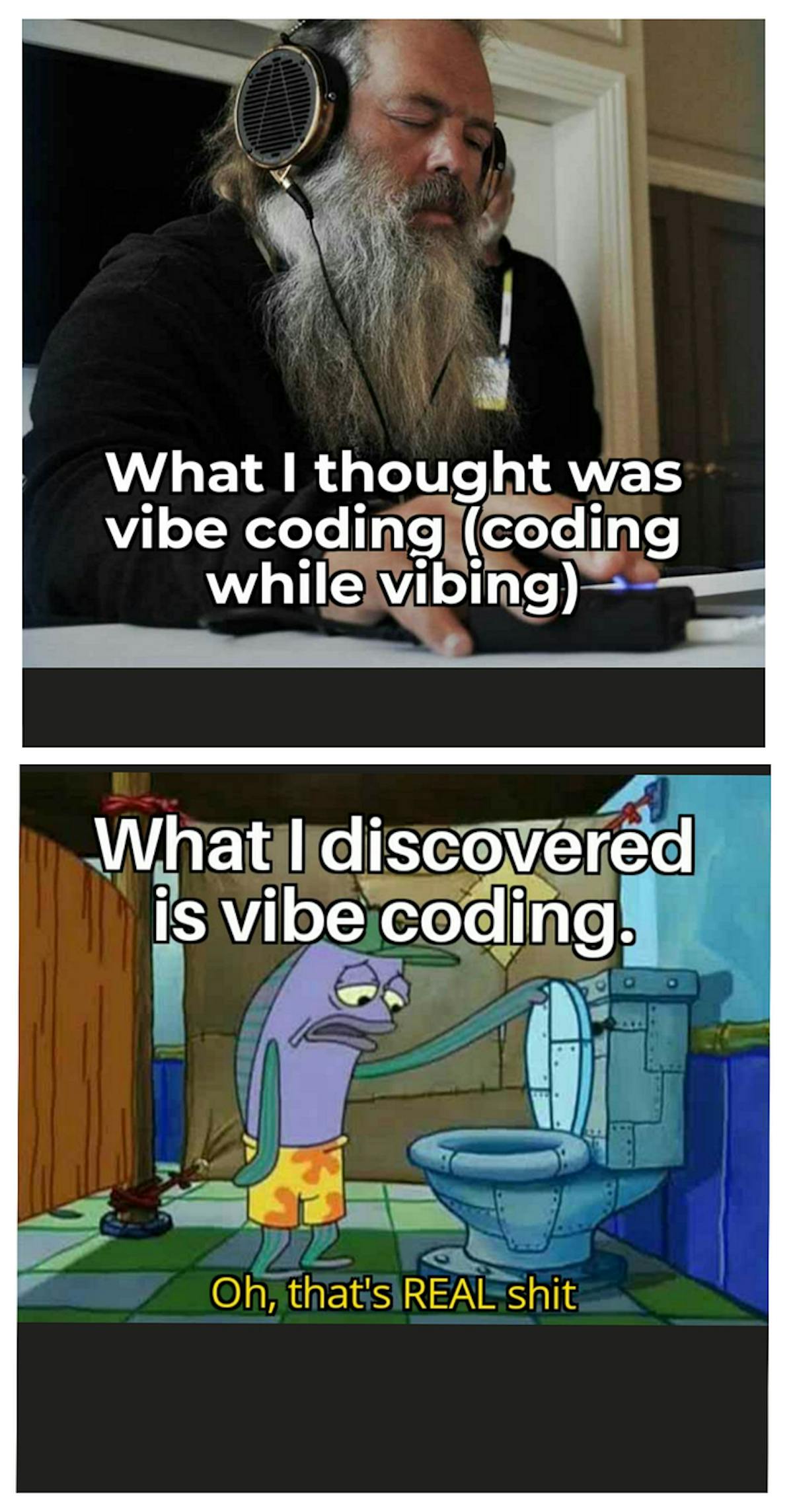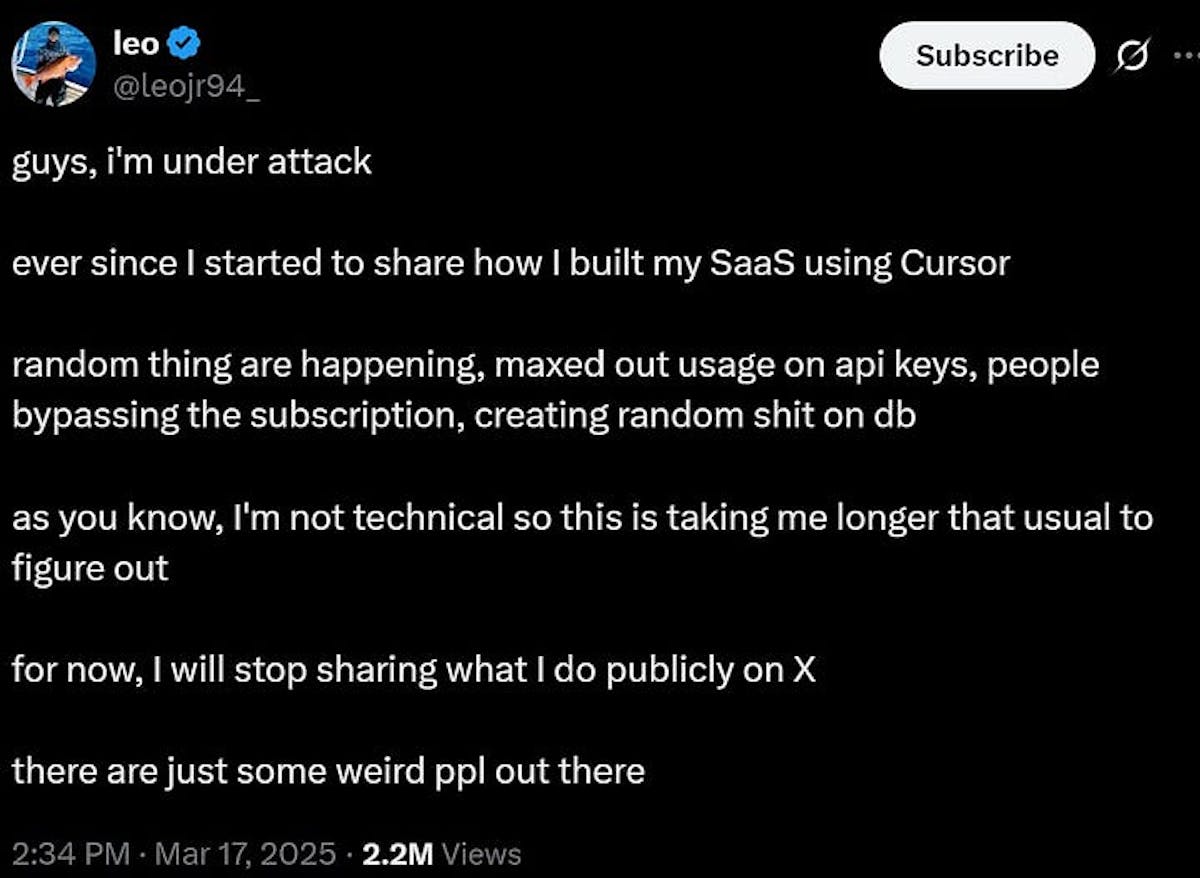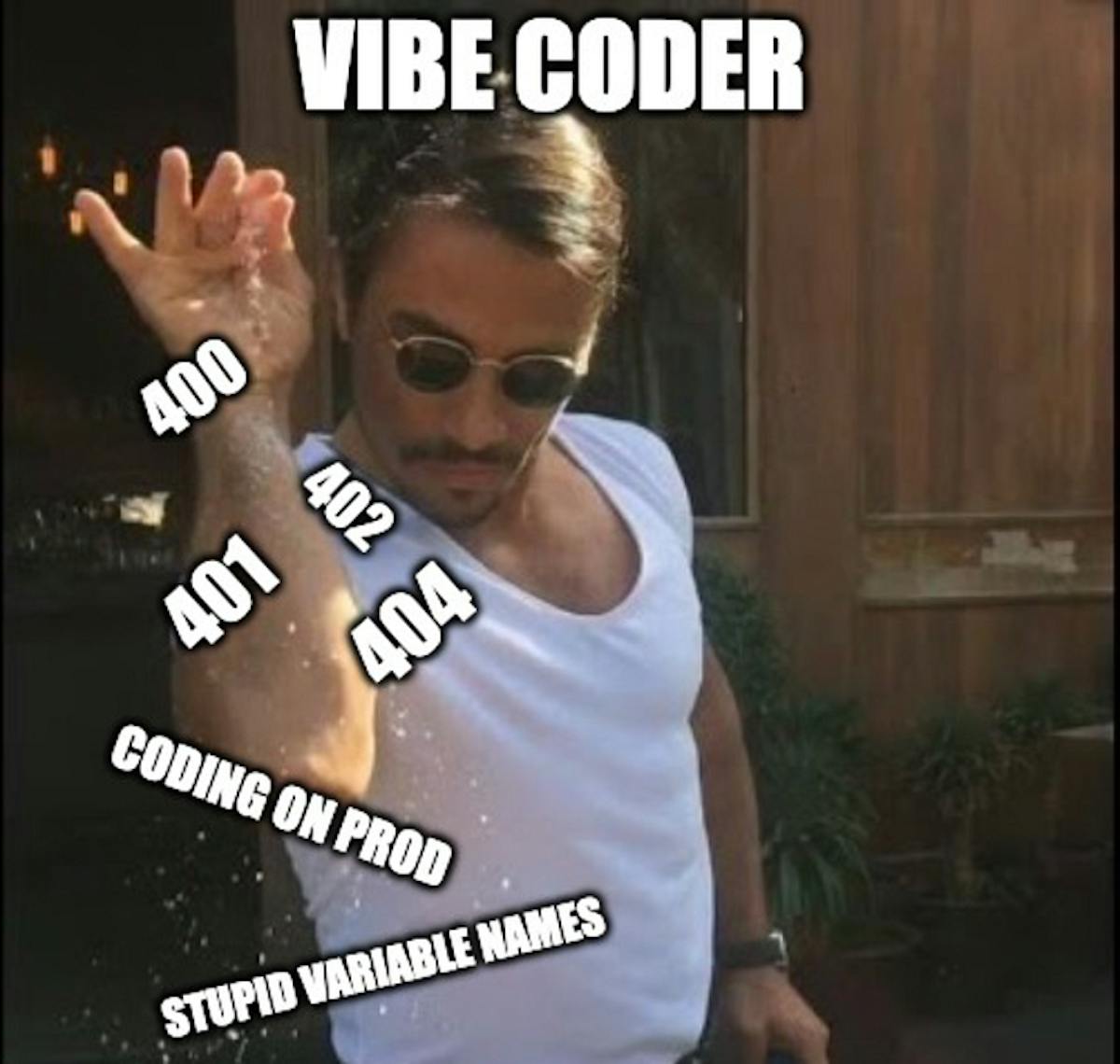Tech in 2025 is in situation. Over 94, 000 technology employees were laid off in 2024 alone.
For jr developers, the video game is borderline impossible. United state software work openings have actually dropped greater than 70 %. New graduates can not just apply and obtain fortunate any longer.
Currently comes the coping mechanism: ambiance coding A method to “build applications” without ever finding out to code. Describe what you want in plain English, let the AI develop it.
Yet it’s a catch. Ambiance coding doesn’t develop programmers; it develops vulnerable middlemans People who can produce code but can not review, debug, or maintain it.
If you’re a brand-new designer, this isn’t a faster way. It’s a high cliff. And you’re being urged to run straight toward it.
What is “Ambiance Coding”? A Medical diagnosis
Ambiance coding is the technique of feeding triggers right into an AI until an application “jobs.” You don’t write. You don’t debug. You just regrow and wish.
An indie programmer called it “coding without coding.”
The issue is that it enables you to avoid the battle: the extremely process that builds an actual designer. Basics like analytical, debugging, and system layout are replaced with timely design.
The outcome is a dangerous illusion of competence. You can generate output, but you can not regulate it. When it damages (and it will), you have no map, no devices, and no idea why. This isn’t coding: it’s outsourcing your own understanding.

The Impression of Speed is a Measurable Lie
Do not take my word for it. The numbers remain in, and they are brutal.
A current METR study threw AI right into the trenches with knowledgeable designers throughout 246 real-world coding jobs. The developers really felt 20 % faster with AI. They really felt efficient. They really felt equipped.
The truth? Their real performance decreased by 19 %
That’s a staggering 39 -point space between feeling fast and working. Why? Since the AI-generated code was a minefield. Just 39 % of it was useful without being repaired. The moment they “conserved” by generating code was burned 10 times over in evaluating, debugging, and untangling the AI’s confident errors.
When the Ambiance Breaks: A Post-Mortem
When vibe coding falls short, it does not just bug out; it fails catastrophically.
Think about the indie developer that built his whole SaaS product with AI. He was celebrated on X for his rate. For a few weeks, he was a hero of the “no-code” activity.
Then the structure fractured.
Customers started bypassing registrations. The data source began corrupting documents. And a safety scientist quietly pointed out that his API secrets were revealed client-side.
The code was a black box. He couldn’t read it. He could not debug it. He could not fix it. Faced with a system he had actually created yet did not recognize, he had just one alternative: he shut the whole product down.
This isn’t a fluke. It’s the unpreventable outcome. Protection experts verify that AI-generated code is a minefield of classic vulnerabilities: SQL injections, bad accessibility controls, the works.
The lesson is brutal: w ithout fundamentals, AI isn’t a faster way; it’s an obligation multiplier.

The Wishing Well Impression
Here’s the basic catch of vibe coding:
AI t’s a genie. It complies with the letter of your desire, never ever the spirit. It will grant you anything you request, but the magic comes with a terrible, surprise rate.
Ask it to “develop a login system” without recognizing protection, and it will gladly develop you a lovely, practical front door with no lock. When your house is robbed, you will not understand how to fix it. You’re not a building contractor; you’re just a person with a broken magic light.
This exposes the central mystery of AI:
AI is most effective in the hands of those that need it least
AI is a multiplier on existing ability, not an alternative to it. Without a foundation, you’re not building a career; you’re developing a home of cards that breaks down the first time the version updates or the API adjustments.
That isn’t a career path. It’s a technique for making on your own the most replaceable person in the space.
The Great De-Skilling
Junior designers are the first targets of the AI buzz cycle. Ambiance coding isn’t teaching them to be engineers, it’s training them to be “code assemblers”.
Individuals who can trigger a system but can not read, reason around, or repair the code it produces. They miss out on the uncomfortable, essential struggle that forges a real programmer: the debugging sessions, the building debates, the slow-moving accumulation of a robust mental version.
The market is already flooded with entry-level ability from bootcamps. Vibe coding makes you also less affordable.
In 2025, the useful programmer isn’t the one who can generate code the fastest. That’s a commodity. The genuine worth depends on what AI can not do: debugging a cryptic error in a heritage system, developing a scalable design, or browsing the complex trade-offs of a security decision.
Below’s the rough truth: AI won’t replace programmers. It will certainly change individuals who were never ever really designers in the first place. The ones who can motivate a service, however can’t repair it when it damages at 2 AM on a Tuesday.
The Technical Debt Time Bomb
Vibe coding is the high-interest financing of software program development.

It offers you the prompt fulfillment of a delivered function, but it hides a mountain of unmaintainable, undocumented code in your repository. The bill always comes due, and it’s paid in late-night debugging sessions and missed deadlines 6 months from currently.
AI-generated code coincides. It’s usually:
- Bloated: Ten lines of code where three would do.
- Complicated: No comments, no clear structure.
- Fragile: It benefits the one straightforward case, but breaks on every edge situation.
- Insecure: Full of safety and security holes a human would have spotted.
The actual pain comes later on. When that code breaks, and it will break, somebody needs to repair it. That someone may be you.
You’ll be digging with a tangled mess, with git dedicates that simply state “AI fix,” attempting to comprehend what an equipment was believing. Debugging it will certainly take ten times longer than it took the AI to write it.
You’re not just building an application; you’re developing tomorrow’s headache.
Completion of Mentorship
The damaged mentorship design speeds up the decrease.
Seniors currently miss explanations (the “why”) due to the fact that an AI can produce the “just how” in seconds. Juniors become productive overnight but continue to be reliant for life. They can ship features, yet they can’t fix them when they inevitably damage.
Several seniors are just as caught, ending up being punctual supervisors as opposed to mentors. They translate demands for an equipment as opposed to teaching basics to a human.
The result? We’re developing a generation of intermediaries, fluent in prompting, yet illiterate in the code itself. The instruction that built our market is being replaced by an API call.
Ambiance coding isn’t just eliminating your skills; it’s killing mentorship.
The Buzz Trap
Allow’s be truthful concerning who is selling you the “ambiance coding” dream.
It’s the influencer that requires a viral post.
It’s the program maker that needs to offer you a faster way.
It’s the grifter that profits from your anxiety to land a task.
They reveal you a glossy demonstration of an application constructed in ten mins, but they never show you the damaged, unmaintainable code underneath. They sell you the emphasize reel, not the reality.
You, the junior designer, are their target audience. You purchase right into the assurance because you’re starving to prosper. But you’re denying a skill; you’re trading your job for an inexpensive dopamine hit of short-term outcome.
Here’s the ruthless mystery they will not tell you:
The people who make use of AI most effectively are the ones who need it the least. They are the experts who use it to increase, not to think.
The Smart Course Onward: Use AI Without Losing Skills
The course onward is clear: AI is a tool, not a replacement. Use it to increase your work, not to do your thinking. You are the expert; the AI is the aide.
Utilize it to enhance your abilities, not change them. Below’s your list:
The Smart Designer’s AI Checklist
✅ Never Ever Depend On, Always Verify.
Treat every line of AI-generated code as a pull demand from a trainee you do not totally trust yet. You are the last code customer. You are responsible for what you ship, not the AI.
✅ Set up “AI-Free” Coding Procedure.
At least when a week, deal with a genuine problem from the ground up. Keep your core analytic muscle mass from atrophying. If you can just code with AI, you can’t really code.
✅ Clarify It to Own It.
If you can’t compose a clear remark explaining why the AI’s code works, you do not comprehend it all right to use it. This is your individual litmus test for real understanding.
✅ Usage AI as a Study Overview, Not a Cheat Sheet.
When AI produces a smart option, do not just duplicate it. Dive into the “why.” What style pattern did it make use of? What collection feature? This is how you turn a momentary shortcut right into an irreversible skill.
✅ Constantly Focus On the Fundamentals.
AI is a relocating target. Your deep understanding of debugging, system design, and security concepts is the bedrock of your career. The tools will change; the concepts won’t.
The objective isn’t to end up being the most effective punctual writer. It’s to be the developer who can construct, debug, and own the solution when the AI strikes a wall surface.
That’s the distinction in between a pseudo-developer and an essential one.
Conclusion: Build Abilities, Not Shortcuts
The path ahead divides in 2.
One is the easy roadway of ‘vibe coding’: a shortcut that causes dependency and a profession improved sand. The various other is harder: constructing actual skills, mastering the fundamentals, and discovering to wield AI as a device to multiply your strength, not change them.
The industry will certainly soon be flooded with AI-reliant coders. The uncommon, important professional will be the one who can believe, debug, and resolve issues when the AI stops working.
Don’t construct your occupation on shortcuts. Construct it on ability, and you will come to be the designer that AI can not change.
This article was originally released by Paolo Perrone on HackerNoon